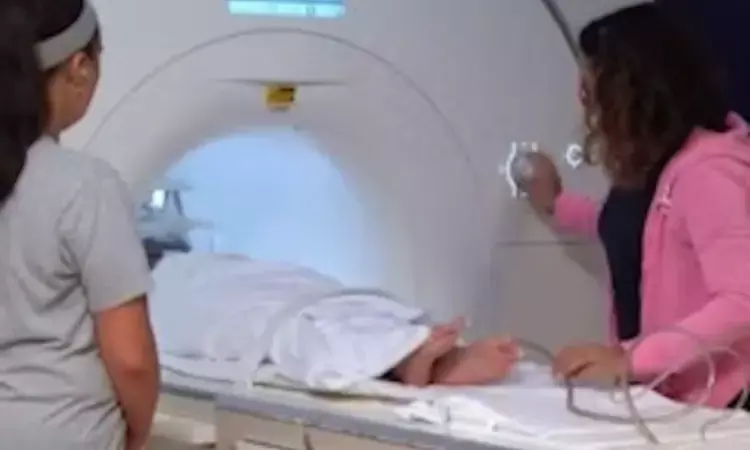- Home
- Medical news & Guidelines
- Anesthesiology
- Cardiology and CTVS
- Critical Care
- Dentistry
- Dermatology
- Diabetes and Endocrinology
- ENT
- Gastroenterology
- Medicine
- Nephrology
- Neurology
- Obstretics-Gynaecology
- Oncology
- Ophthalmology
- Orthopaedics
- Pediatrics-Neonatology
- Psychiatry
- Pulmonology
- Radiology
- Surgery
- Urology
- Laboratory Medicine
- Diet
- Nursing
- Paramedical
- Physiotherapy
- Health news
- Fact Check
- Bone Health Fact Check
- Brain Health Fact Check
- Cancer Related Fact Check
- Child Care Fact Check
- Dental and oral health fact check
- Diabetes and metabolic health fact check
- Diet and Nutrition Fact Check
- Eye and ENT Care Fact Check
- Fitness fact check
- Gut health fact check
- Heart health fact check
- Kidney health fact check
- Medical education fact check
- Men's health fact check
- Respiratory fact check
- Skin and hair care fact check
- Vaccine and Immunization fact check
- Women's health fact check
- AYUSH
- State News
- Andaman and Nicobar Islands
- Andhra Pradesh
- Arunachal Pradesh
- Assam
- Bihar
- Chandigarh
- Chattisgarh
- Dadra and Nagar Haveli
- Daman and Diu
- Delhi
- Goa
- Gujarat
- Haryana
- Himachal Pradesh
- Jammu & Kashmir
- Jharkhand
- Karnataka
- Kerala
- Ladakh
- Lakshadweep
- Madhya Pradesh
- Maharashtra
- Manipur
- Meghalaya
- Mizoram
- Nagaland
- Odisha
- Puducherry
- Punjab
- Rajasthan
- Sikkim
- Tamil Nadu
- Telangana
- Tripura
- Uttar Pradesh
- Uttrakhand
- West Bengal
- Medical Education
- Industry
Biparametric MRI Effective as Multiparametric MRI in Detecting Prostate Cancer: Study

A recent study published in the Journal of the American Medical Association found biparametric MRI to performs just as well as the current gold-standard multiparametric MRI in detecting clinically significant prostate cancer. The findings could reshape global diagnostic practices, particularly in health systems struggling with capacity and cost constraints.
Multiparametric MRI has long been considered the standard for diagnosing prostate cancer, combining T2-weighted, diffusion-weighted, and dynamic contrast–enhanced (DCE) sequences. While highly effective, this approach is resource-intensive and relies on gadolinium-based contrast, raising both logistical and financial barriers. Biparametric MRI excludes the DCE sequence and offers a faster and less costly alternative.
From April 2022 to September 2023, this trial enrolled 555 biopsy-naive men with elevated prostate-specific antigen (PSA) levels or abnormal digital rectal exams. Conducted across 22 centers in 12 countries, the study analyzed data from 490 participants after exclusions. The men, with a median age of 65 years and median PSA of 5.6 ng/mL, underwent both biparametric and multiparametric MRI. The radiologists first reported on biparametric scans without access to DCE data, then assessed the full multiparametric images.
If either imaging modality suggested clinically significant cancer, patients received targeted biopsies, with or without additional systematic sampling. The trial was designed to test whether biparametric MRI was “noninferior” to multiparametric MRI, with a 5% margin set for acceptable difference.
The study found biparametric MRI help identify cancer in 29.2% of men (143 out of 490) while multiparametric MRI detected it in 29.6% (145 out of 490). The difference was a mere −0.4 percentage points, statistically insignificant and well within the noninferiority margin.
Detection rates of clinically insignificant cancers were also nearly identical. Biparametric MRI flagged 9.2% of men, when compared with 9.6% for multiparametric scans. Also, central quality control showed that 99% of all scans were diagnostically adequate, highlighting the reliability of the abbreviated technique.
With approximately 4 million prostate MRIs performed worldwide each year, the shift to biparametric imaging could free up scanner time, shorten waiting lists, and reduce costs without compromising care. Overall, the findings suggest that, provided imaging quality is maintained, biparametric MRI has the potential to become the new global standard in prostate cancer diagnosis.
Reference:
Ng, A. B. C. D., Asif, A., Agarwal, R., Panebianco, V., Girometti, R., Ghai, S., Gómez-Gómez, E., Budäus, L., Barrett, T., Radtke, J. P., Kesch, C., De Cobelli, F., Pham, T., Taneja, S. S., Hu, J. C., Tewari, A., Rodríguez Cabello, M. Á., Dias, A. B., Mynderse, L. A., … PRIME Study Group Collaborators. (2025). Biparametric vs multiparametric MRI for prostate cancer diagnosis: The PRIME diagnostic clinical trial. JAMA: The Journal of the American Medical Association. https://doi.org/10.1001/jama.2025.13722
Neuroscience Masters graduate
Jacinthlyn Sylvia, a Neuroscience Master's graduate from Chennai has worked extensively in deciphering the neurobiology of cognition and motor control in aging. She also has spread-out exposure to Neurosurgery from her Bachelor’s. She is currently involved in active Neuro-Oncology research. She is an upcoming neuroscientist with a fiery passion for writing. Her news cover at Medical Dialogues feature recent discoveries and updates from the healthcare and biomedical research fields. She can be reached at editorial@medicaldialogues.in
Dr Kamal Kant Kohli-MBBS, DTCD- a chest specialist with more than 30 years of practice and a flair for writing clinical articles, Dr Kamal Kant Kohli joined Medical Dialogues as a Chief Editor of Medical News. Besides writing articles, as an editor, he proofreads and verifies all the medical content published on Medical Dialogues including those coming from journals, studies,medical conferences,guidelines etc. Email: drkohli@medicaldialogues.in. Contact no. 011-43720751


